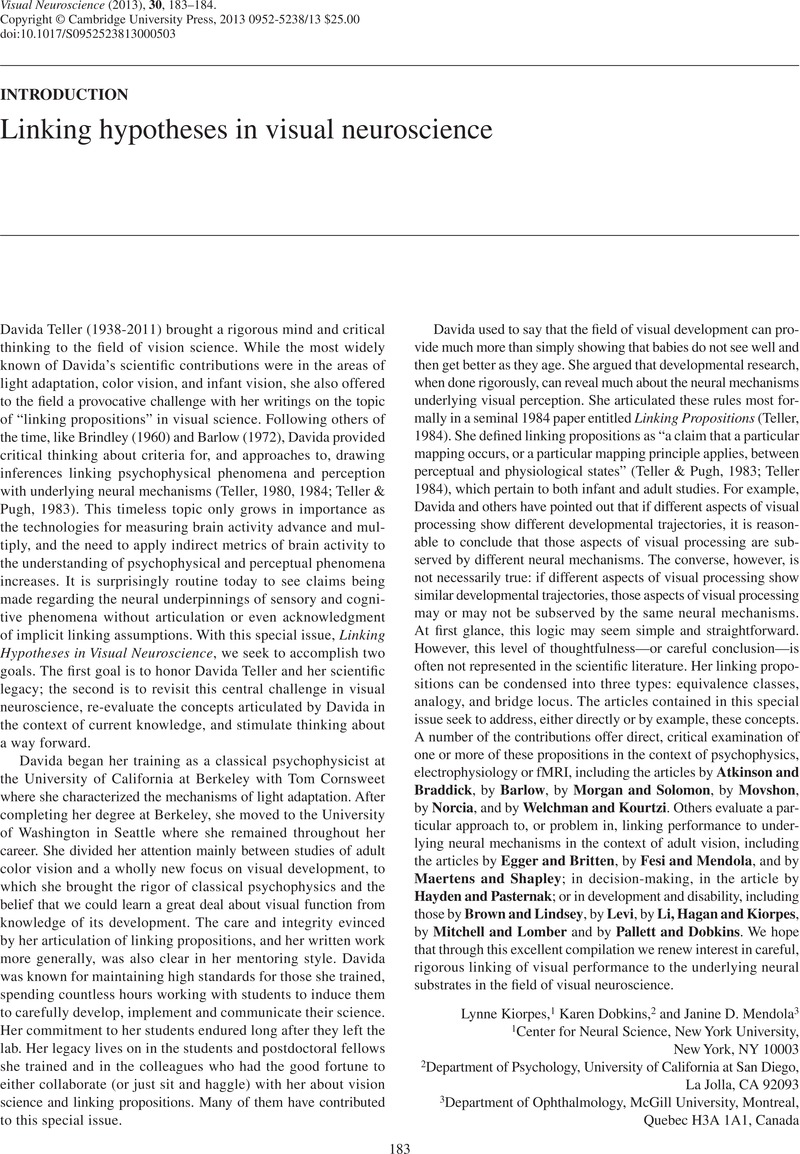Crossref Citations
This article has been cited by the following publications. This list is generated based on data provided by Crossref.
Kiorpes, Lynne
2016.
The Puzzle of Visual Development: Behavior and Neural Limits.
The Journal of Neuroscience,
Vol. 36,
Issue. 45,
p.
11384.





